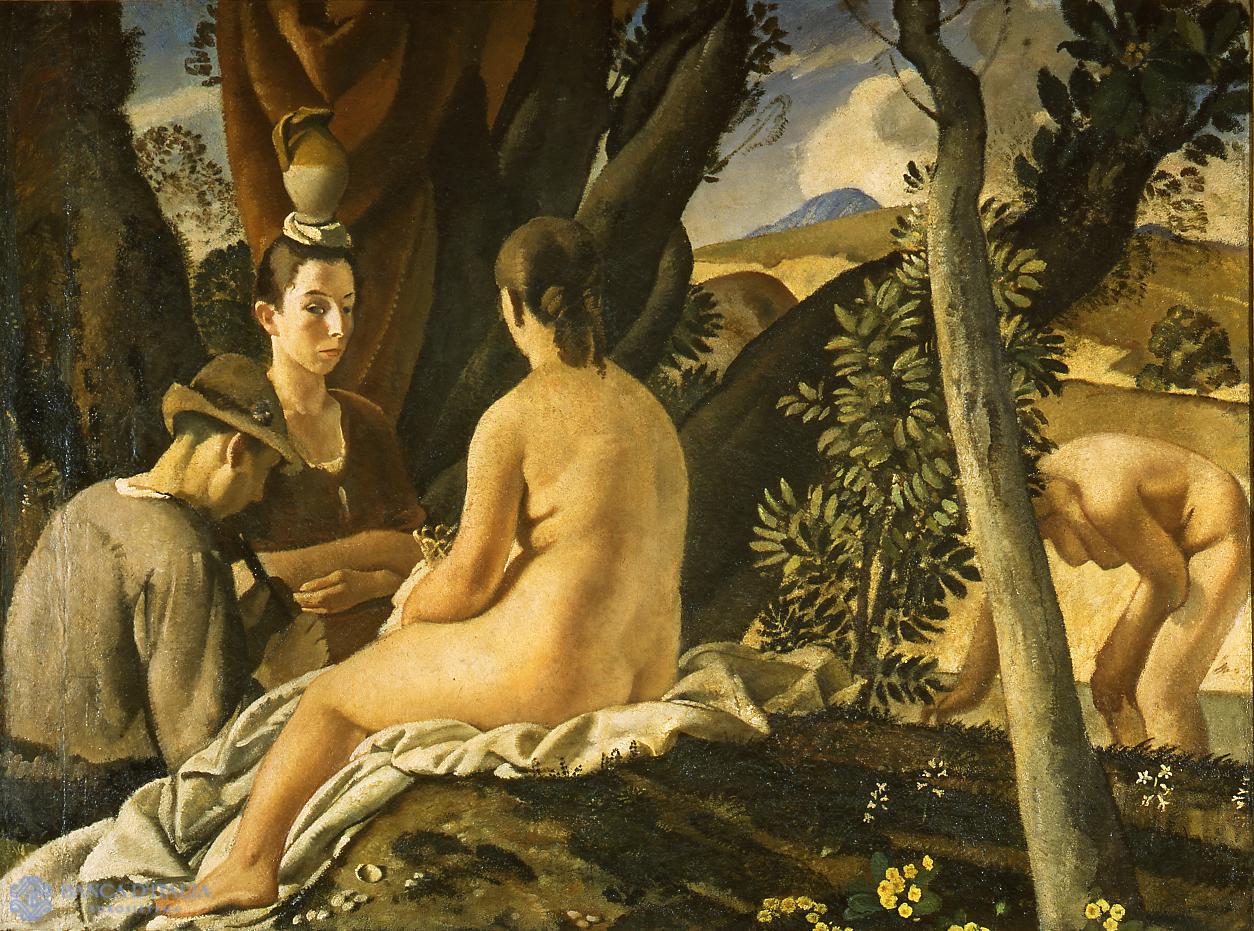Felice Carena was born in Cumiana (near Turin) in 1879 and he died in Venice in 1966. He was a pupil of Giacomo Grosso at the Accademia Albertina in Turin and from the start he addressed himself to the secessionist and symbolist approaches, developing a predilection for the morbid intimism of the French artist Eugène Carrière, but also displaying an interest in Boecklin and, during his only visit to Paris while he attended the Academy, studying the works of Courbet. In 1906 he was awarded a national art prize for his painting La Rivolta – a grant to live and work for four years in Rome, where he remained for a long time. During the First World War from 1915-1918 he was an officer in the artillery; then, in 1919, he returned to Turin to exhibit his painting Contadini al sole, which is on show today at the Civica Galleria d’Arte Moderna in Turin. This work inaugurated a new artistic path based on a solid and spacious perspective, composed calmness, not very far from the climate of the “Plastic Values” that were popular in those years. In the interwar period, he received much critical acclaim and official recognition; in 1924 he was appointed Professor at the Academy of Fine Arts in Florence where he went to live. In 1926 he exhibited fifty paintings at the Venice Biennale, from which he received a prize for his work at the 1940 edition. After being awarded the title of Accademico d’Italia in 1933; after the war he was tried for having profited from the Fascist regime and, although he was acquitted, this experience left a dramatic echo, sometimes with expressionist tones, in his subsequent work.
Felice Carena
Felice Carena (Cuniana 1879 - Venice 1966)
20th century AD


